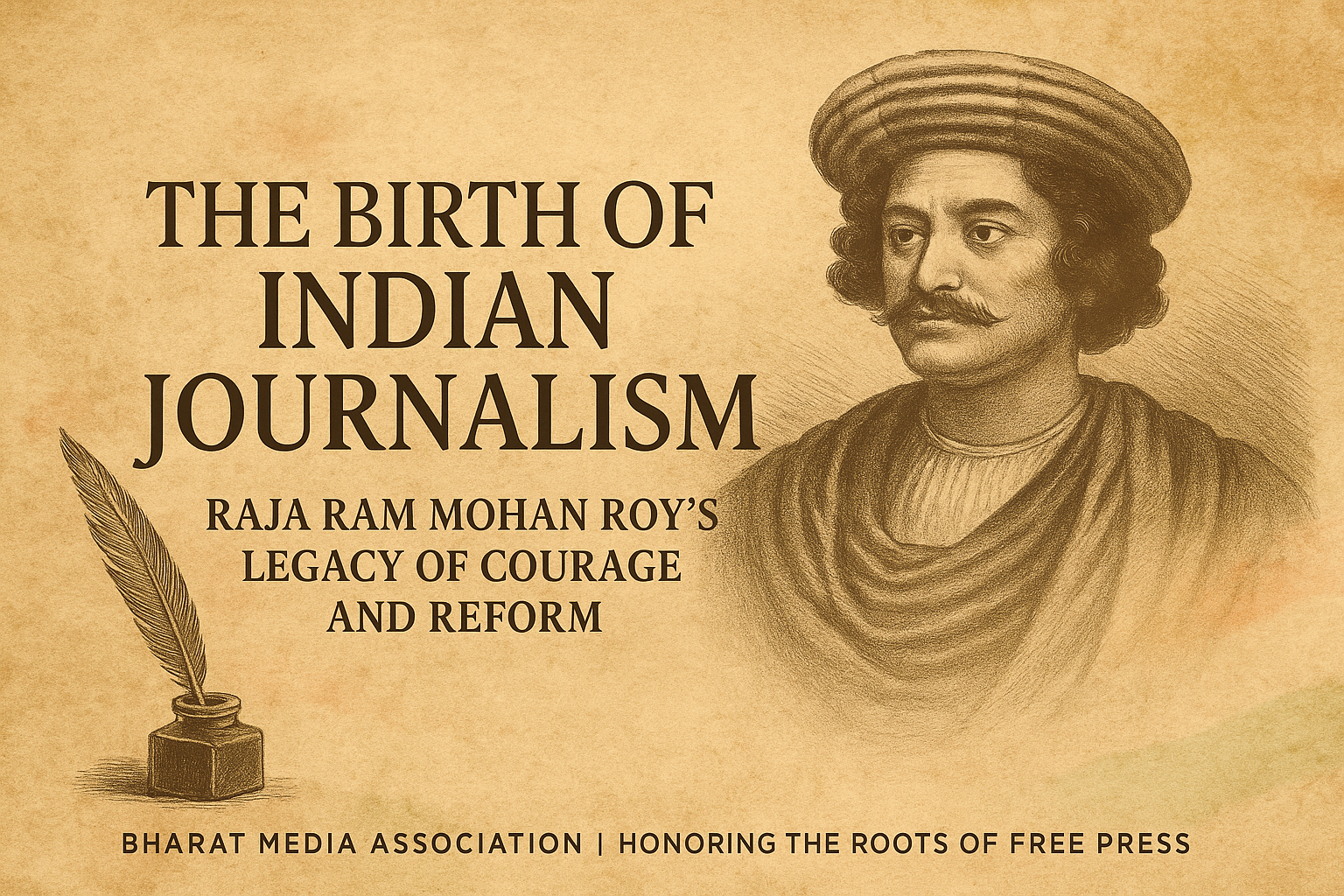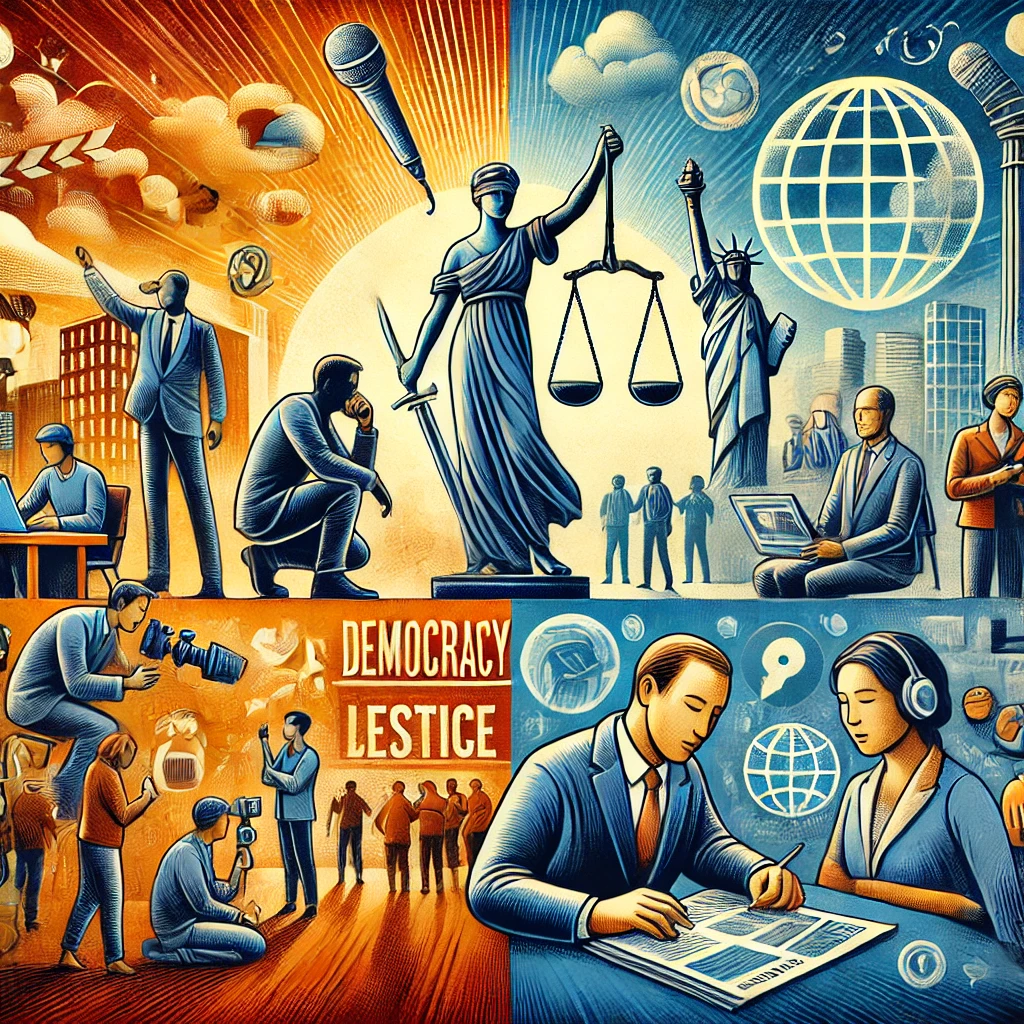*కలం Vs. కవాతు (The Pen Vs. The March)*
We are often told the golden rule of journalism is objectivity—to be a dispassionate chronicler of events. But in the face of profound and undeniable injustice, that rule can feel like a moral betrayal.
This question is about the two souls living within you: the Journalist and the Human.
Have you ever covered a story where the 'objective' truth was so monstrously unjust that the Journalist's code of dispassion felt wholly inadequate? In that moment, did you feel a pull to let the Human take over—to drop the notebook, join the protest, or use your platform not just to inform, but to actively campaign for a specific outcome?
Where do you draw your personal line? Is the highest calling of your profession to create a perfect, unimpeachable record of our times, or is it to bend the arc of history, even just a little, towards justice?
జర్నలిజం యొక్క స్వర్ణ సూత్రం 'నిష్పాక్షికత' అని మనకు చెబుతారు - సంఘటనలకు కేవలం నిర్లిప్త సాక్షిగా ఉండాలని. కానీ కొన్నిసార్లు దారుణమైన అన్యాయం కళ్ళముందు జరిగినప్పుడు, ఆ సూత్రం ఒక నైతిక ద్రోహంలా అనిపిస్తుంది. ఈ ప్రశ్న మీలోని రెండు ఆత్మల గురించి: పాత్రికేయుడు మరియు మానవుడు.
ఒక కథను కవర్ చేస్తున్నప్పుడు, అందులోని అన్యాయం ఎంత దారుణంగా ఉందంటే, ఒక పాత్రికేయుడిగా మీరు పాటించాల్సిన నిర్లిప్తత నియమం మీకు సరిపోదనిపించిన సందర్భం ఎప్పుడైనా ఉందా? ఆ క్షణంలో, మీలోని మానవుడిని మేల్కొలపాలనిపించిందా? అంటే... నోట్బుక్ పక్కనపెట్టి, నిరసనలో గొంతు కలపాలని, లేదా మీ వేదికను కేవలం సమాచారం కోసమే కాకుండా, ఒక నిర్దిష్ట ఫలితం కోసం ఉద్యమించడానికే ఉపయోగించాలని అనిపించిందా?
మీరు మీ గీతను ఎక్కడ గీస్తారు? మీ వృత్తి యొక్క అత్యున్నత లక్ష్యం... మన కాలానికి సంబంధించిన దోషరహితమైన రికార్డును సృష్టించడమా? లేక చరిత్ర గమనాన్ని, కొద్దిగానైనా సరే, న్యాయం వైపుకు వంచడమా?
We are often told the golden rule of journalism is objectivity—to be a dispassionate chronicler of events. But in the face of profound and undeniable injustice, that rule can feel like a moral betrayal.
This question is about the two souls living within you: the Journalist and the Human.
Have you ever covered a story where the 'objective' truth was so monstrously unjust that the Journalist's code of dispassion felt wholly inadequate? In that moment, did you feel a pull to let the Human take over—to drop the notebook, join the protest, or use your platform not just to inform, but to actively campaign for a specific outcome?
Where do you draw your personal line? Is the highest calling of your profession to create a perfect, unimpeachable record of our times, or is it to bend the arc of history, even just a little, towards justice?
జర్నలిజం యొక్క స్వర్ణ సూత్రం 'నిష్పాక్షికత' అని మనకు చెబుతారు - సంఘటనలకు కేవలం నిర్లిప్త సాక్షిగా ఉండాలని. కానీ కొన్నిసార్లు దారుణమైన అన్యాయం కళ్ళముందు జరిగినప్పుడు, ఆ సూత్రం ఒక నైతిక ద్రోహంలా అనిపిస్తుంది. ఈ ప్రశ్న మీలోని రెండు ఆత్మల గురించి: పాత్రికేయుడు మరియు మానవుడు.
ఒక కథను కవర్ చేస్తున్నప్పుడు, అందులోని అన్యాయం ఎంత దారుణంగా ఉందంటే, ఒక పాత్రికేయుడిగా మీరు పాటించాల్సిన నిర్లిప్తత నియమం మీకు సరిపోదనిపించిన సందర్భం ఎప్పుడైనా ఉందా? ఆ క్షణంలో, మీలోని మానవుడిని మేల్కొలపాలనిపించిందా? అంటే... నోట్బుక్ పక్కనపెట్టి, నిరసనలో గొంతు కలపాలని, లేదా మీ వేదికను కేవలం సమాచారం కోసమే కాకుండా, ఒక నిర్దిష్ట ఫలితం కోసం ఉద్యమించడానికే ఉపయోగించాలని అనిపించిందా?
మీరు మీ గీతను ఎక్కడ గీస్తారు? మీ వృత్తి యొక్క అత్యున్నత లక్ష్యం... మన కాలానికి సంబంధించిన దోషరహితమైన రికార్డును సృష్టించడమా? లేక చరిత్ర గమనాన్ని, కొద్దిగానైనా సరే, న్యాయం వైపుకు వంచడమా?
*కలం Vs. కవాతు (The Pen Vs. The March)*
We are often told the golden rule of journalism is objectivity—to be a dispassionate chronicler of events. But in the face of profound and undeniable injustice, that rule can feel like a moral betrayal.
This question is about the two souls living within you: the Journalist and the Human.
Have you ever covered a story where the 'objective' truth was so monstrously unjust that the Journalist's code of dispassion felt wholly inadequate? In that moment, did you feel a pull to let the Human take over—to drop the notebook, join the protest, or use your platform not just to inform, but to actively campaign for a specific outcome?
Where do you draw your personal line? Is the highest calling of your profession to create a perfect, unimpeachable record of our times, or is it to bend the arc of history, even just a little, towards justice?
జర్నలిజం యొక్క స్వర్ణ సూత్రం 'నిష్పాక్షికత' అని మనకు చెబుతారు - సంఘటనలకు కేవలం నిర్లిప్త సాక్షిగా ఉండాలని. కానీ కొన్నిసార్లు దారుణమైన అన్యాయం కళ్ళముందు జరిగినప్పుడు, ఆ సూత్రం ఒక నైతిక ద్రోహంలా అనిపిస్తుంది. ఈ ప్రశ్న మీలోని రెండు ఆత్మల గురించి: పాత్రికేయుడు మరియు మానవుడు.
ఒక కథను కవర్ చేస్తున్నప్పుడు, అందులోని అన్యాయం ఎంత దారుణంగా ఉందంటే, ఒక పాత్రికేయుడిగా మీరు పాటించాల్సిన నిర్లిప్తత నియమం మీకు సరిపోదనిపించిన సందర్భం ఎప్పుడైనా ఉందా? ఆ క్షణంలో, మీలోని మానవుడిని మేల్కొలపాలనిపించిందా? అంటే... నోట్బుక్ పక్కనపెట్టి, నిరసనలో గొంతు కలపాలని, లేదా మీ వేదికను కేవలం సమాచారం కోసమే కాకుండా, ఒక నిర్దిష్ట ఫలితం కోసం ఉద్యమించడానికే ఉపయోగించాలని అనిపించిందా?
మీరు మీ గీతను ఎక్కడ గీస్తారు? మీ వృత్తి యొక్క అత్యున్నత లక్ష్యం... మన కాలానికి సంబంధించిన దోషరహితమైన రికార్డును సృష్టించడమా? లేక చరిత్ర గమనాన్ని, కొద్దిగానైనా సరే, న్యాయం వైపుకు వంచడమా?
















